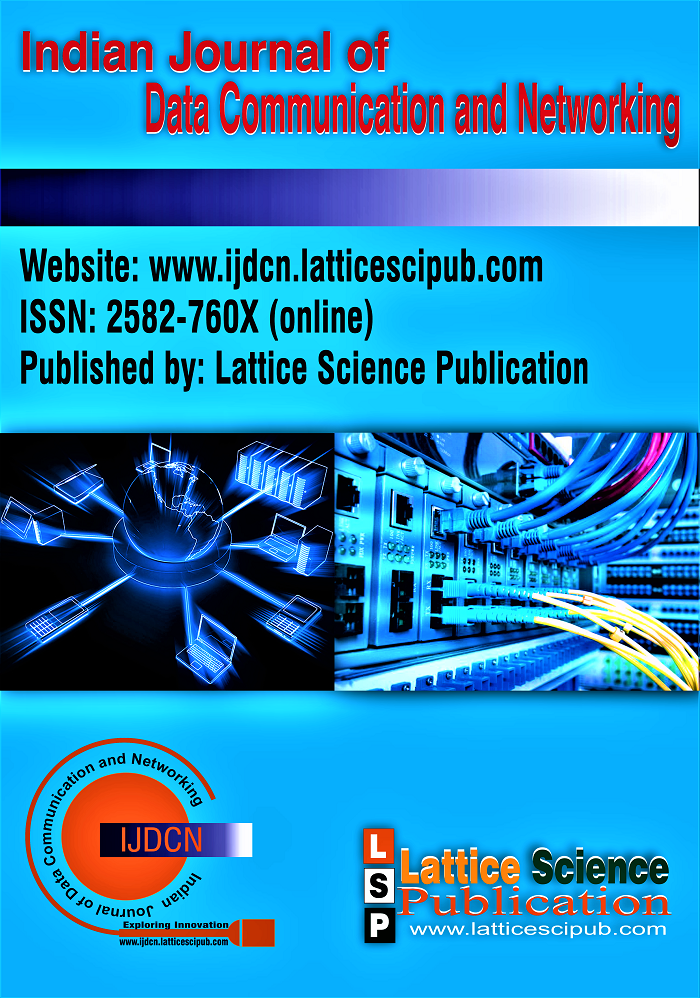VANET: Framework, Challenges and Applications
Main Article Content
Abstract
Vehicular Ad-Hoc Network (VANET) is one of the essential research field because of large increase in usage of vehicles on road. Many VANET applications are employed to improve road safety conditions, vehicle traffic, an emergency warning to vehicle drivers, collision avoidance and other non-safety applications for comfort. The main aim of these applications are to modernize the various processes associated with road traffic, vehicles, drivers, passengers and pedestrians by implementing smart transport systems. This study is to implement an intelligent vehicular transport design to improve the road safety, navigation and comfort. VANET communication technology is a combination of mobile vehicles with ad hoc networks. The purpose of this research is to predict and prevent road accidents by transmitting emergency messages using vehicular network technology. While transmitting emergency messages, the VANET has various challenges. They are High mobility of the vehicles, Dynamic topology, Wireless communication, Minimum transmission delay, Connectivity of the network, optimal usage of transmission power. These challenges leave the vehicular networking disconnected and make an exchange of information very difficult. Even though many researchers have done significant work during the last decade on vehicular networking, some problems have not yet been solved.
Downloads
Article Details

This work is licensed under a Creative Commons Attribution-NonCommercial-NoDerivatives 4.0 International License.
How to Cite
References
Bawangaonwala, M., Wadhwa, D., Nandeshwar, U. V., Dhurate, S., Ramteke, S. P., Bante, P. N. and Ansari, S. (2018), ‘A review on development of intelligent transport system to compare with nagpur transport system’, International Journal of Computer Science and Mobile Computing 7(4), 12–21. J. Clerk Maxwell, A Treatise on Electricity and Magnetism, 3rd ed., vol. 2. Oxford: Clarendon, 1892, pp.68–73.
Hartenstein, H. and Laberteaux, K. (2010), VANET: vehicular applications and internetworking technologies, Wiley, UK. [CrossRef]
Ayyappan, B. and Kumar, P. M. (2016), Vehicular ad hoc networks (vanet): Architectures, methodologies and design issues, in ‘Second International Conference on Science Technology Engineering and Management’, pp. 177–180. [CrossRef]
Ranjan, P. and Ahirwar, K. K. (2011), Comparative study of vanet and manet routing protocols, in ‘International Conference on Advanced Computing and Communication Technologies’, pp. 517–523.
Eichler, S. (2007), Performance evaluation of the ieee 802.11 p wave communication standard, in ‘66th Vehicular Technology Conference’, pp. 2199–2203. [CrossRef]
Dinesh, D. and Deshmukh, M. (2014), ‘Challenges in vehicle ad hoc network (vanet)’, International Journal of Engineering Technology, Management and Applied Sciences 2(7), 76–88.
Samara, G., Al-Salihy, W. A. and Sures, R. (2010), Security issues and challenges of vehicular ad hoc networks (vanet), in ‘4th International Conference on New Trends in Information Science and Service Science’, pp. 393–398. [CrossRef]
Rehman, S., Khan, M. A., Zia, T. A. and Zheng, L. (2013), ‘Vehicular ad-hoc networks (vanets)-an overview and challenges’, Journal of Wireless Networking and Communications 3(3), 29–38.
Kaur,P.andBhagat,N.(2016),‘A review on clustering in vanet’, International Journal of Innovative Research in Computer and Communication Engineering 4(5), 9697–9700.
Zhang,Z., Boukerche, A. and Pazzi,R. (2011), A novel multi-hop clustering scheme for vehicular ad-hoc networks, in ‘Proceedings of the 9th ACM international symposium on Mobility management and wireless access’, pp. 19–26. [CrossRef]
Priyanka,T.andSharma,T.(2014),‘Asurveyonclusteringtechniquesusedinvehicular ad hoc network’, International Journal of Advanced Computational Engineering and Networking 2(8), 4–9.
Rawashdeh,Z.Y. and Mahmud,S.M. (2012), ‘A novel algorithm to form stable clusters in vehicular ad hoc networks on highways’, EURASIP Journal on Wireless Communications and Networking 15(1), 1–13. [CrossRef]





